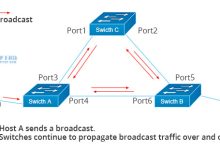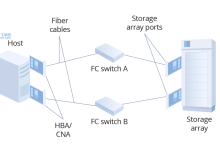在Oracle JVM环境下进行下载的指南
随着网络速度的逐步提高,文件的下载已经成为了我们日常生活中必不可少的一项功能。在Java开发领域中,我们需要经常使用到下载功能来获取所需资源,例如jar包等。然而,下载进程的顺利进行却对环境有一定的要求。本文将向大家介绍在Oracle JVM环境下进行下载的指南。
1. 下载进程简介
下载进程通常分为链接、下载、解压等几个步骤。其中,链接是由URL对象及openConnection()方法实现的,下载及解压则是由流处理类实现的。
2. 创建URL对象
URL对象是连接网络资源的入口,您需要将您需要下载的资源URL网址传递给URL类的构造器来创建一个URL对象。例如:
“`java
URL url = new URL(“http://www.example.com/example.jar”);
3. 建立连接
建立连接是下载进程的重头戏。URLConnection类可帮助我们在Java代码中打开URL资源并使用HTTP协议与该资源进行通信。URLConnection类内置一组方法,允许我们打开连接并读取请求响应的数据。
我们可以使用以下代码展示如何建立连接及获取请求响应的代码:
```java
URLConnection conn = url.openConnection();
InputStream in = conn.getInputStream();
ByteArrayOutputStream out = new ByteArrayOutputStream();
byte[] buffer = new byte[1024];
int len = -1;
while ((len = in.read(buffer)) != -1) {
out.write(buffer, 0, len);
}
byte[] result = out.toByteArray();
in.close();
out.close();
4. 显示下载进度
要在Java中显示下载进度,您可以使用JavaFX方案,该方案提供了ProgressBar类。该类可帮助您将进度条增加到UI设计中。以下是一个例子:
“`java
ProgressBar progressBar = new ProgressBar();
progressBar.setProgress(0.0);
Task task = new Task() {
byte[] result;
@Override
protected Void call() throws Exception {
URL url = new URL(“http://www.example.com/example.jar”);
URLConnection conn = url.openConnection();
InputStream in = conn.getInputStream();
ByteArrayOutputStream out = new ByteArrayOutputStream();
byte[] buffer = new byte[1024];
int len = -1;
int currentLength = 0;
long totalLength = conn.getContentLengthLong();
while ((len = in.read(buffer)) != -1) {
out.write(buffer, 0, len);
currentLength += len;
updateProgress(currentLength, totalLength);
}
result = out.toByteArray();
in.close();
out.close();
return null;
}
@Override
protected void succeeded() {
//成功后的处理
super.succeeded();
}
};
progressBar.progressProperty().bind(task.progressProperty());
Thread thread = new Thread(task);
thread.setDaemon(true); // 将线程设置为守护线程,当用户界面关闭时,该线程将一起关闭
thread.start();
5. 总结
上述五个步骤是在Oracle JVM环境下进行下载的主要步骤。根据下载文件的不同,下载时间和速度也会有所不同。因此,在进行下载操作时,还需要注意资源占用的问题。如果服务器使用的是SSL协议,您还需要添加SSL支持。但这些步骤已经可以帮助您完成下载进程,并将所需资源保存到您的电脑上。
附:参考代码
```java
import javafx.application.Application;
import javafx.concurrent.Task;
import javafx.geometry.Pos;
import javafx.scene.Scene;
import javafx.scene.control.Button;
import javafx.scene.control.ProgressBar;
import javafx.scene.layout.BorderPane;
import javafx.stage.Stage;
import java.io.ByteArrayOutputStream;
import java.io.InputStream;
import java.net.URL;
import java.net.URLConnection;
public class DownloadProgressBarDemo extends Application {
private ProgressBar progressBar = new ProgressBar(); //1.创建进度条
private Button button = new Button("下载资源");
@Override
public void start(Stage primaryStage) {
BorderPane pane = new BorderPane();
pane.setCenter(progressBar);
pane.setBottom(button);
BorderPane.setAlignment(button, Pos.CENTER); //2.将按钮放入中间
Scene scene = new Scene(pane, 300, 150);
primaryStage.setScene(scene);
primaryStage.show();
button.setOnAction(e -> {
progressBar.setProgress(0.0); //3.将进度条恢复为0
Task task = new Task() { //4.创建任务
byte[] result;
@Override
protected Void call() throws Exception {
URL url = new URL("http://www.example.com/example.jar");
URLConnection conn = url.openConnection();
InputStream in = conn.getInputStream();
ByteArrayOutputStream out = new ByteArrayOutputStream();
byte[] buffer = new byte[1024];
int len = -1;
int currentLength = 0;
long totalLength = conn.getContentLengthLong();//5.获取网络数据长度
while ((len = in.read(buffer)) != -1) {
out.write(buffer, 0, len);
currentLength += len;
updateProgress(currentLength, totalLength);//6.更新进度条
}
result = out.toByteArray();
in.close();
out.close();
return null;
}
@Override
protected void succeeded() { //7.任务完成后的处理
//成功后的处理
super.succeeded();
}
};
progressBar.progressProperty().bind(task.progressProperty());//8.绑定进度条和任务
Thread thread = new Thread(task);
thread.setDaemon(true); //9.将线程设置为守护线程
thread.start();
});
}
public static void mn(String[] args) {
launch(args);
}
}

 国外主机测评 - 国外VPS,国外服务器,国外云服务器,测评及优惠码
国外主机测评 - 国外VPS,国外服务器,国外云服务器,测评及优惠码










